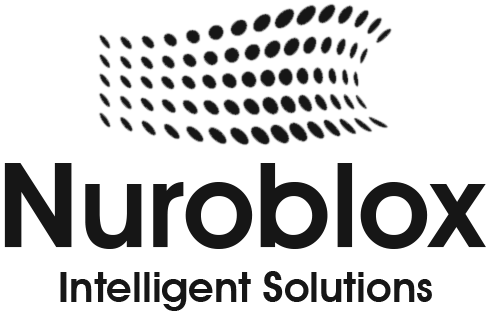How AI Agents for Business Unlock Productivity Gains Across Teams
The modern enterprise is caught in a paradox. Despite unprecedented technological adoption, significant productivity growth remains elusive for many. The challenge lies not in a lack of tools, but in the friction between them the manual handoffs, data silos, and communication overhead that bog down even the most talented teams. Now, a new paradigm is emerging that promises to break this deadlock – the rise of autonomous AI agents for business.
These are not merely advanced chatbots or automation scripts; they are sophisticated digital entities capable of reasoning, planning, and executing complex, multi-step tasks with minimal human intervention. By acting as autonomous collaborators, AI agents are redefining the nature of work, unlocking substantial productivity gains, and fundamentally reshaping team collaboration with AI. This article explores how these intelligent agents function, quantifies their impact with hard data, and provides a strategic roadmap for integrating them to drive enterprise-wide value.
The Dawn of a New Work Paradigm – Beyond Automation to True Collaboration
For decades, business automation has focused on isolated, repetitive tasks. AI agents represent a monumental leap forward. They function as persistent, goal-oriented partners that can observe their environment, create a plan using advanced AI models, and use software tools to take action in a continuous “observe-plan-act” cycle that allows them to learn and adapt over time .
This capability transforms them from passive tools into active team members. An enterprise can deploy a network of specialized agents, some handling HR inquiries, others optimizing supply chains or managing sales workflows that collaborate not only with human employees but also with each other. This interconnected ecosystem breaks down the departmental silos that create bottlenecks, enabling a more fluid and intelligent approach to business process automation.
Quantifying the Impact – Data-Driven Productivity Gains
The shift toward autonomous AI agents is already yielding dramatic and measurable results across industries. Unlike incremental improvements, agent-driven transformations deliver compounding value by optimizing entire workflows.
A survey by PwC highlights this trend, revealing that among companies adopting AI agents, 66% report increased productivity, 57% see significant cost savings, and 55% achieve faster decision-making. The gains are not abstract; they are tied to concrete business outcomes.
Revolutionizing Core Business Functions
- Finance and Administration – In finance, accuracy and speed are paramount. AI agents are automating everything from cash flow management and ledger reporting to real-time accounting and invoice dispute resolution. A powerful case study comes from Direct Mortgage Corp., which deployed AI agents to automate loan document classification and data extraction. The result was an 80% reduction in loan processing costs and a 20-fold acceleration in application approvals.
- Human Resources – HR teams are leveraging AI agents to automate and personalize the entire employee lifecycle. Autonomous AI agents can generate job requisitions, screen candidates, coordinate complex onboarding workflows, and even create individualized learning plans for employees. Virtual HR agents now handle common employee queries about benefits or policies, reducing administrative load and improving employee satisfaction.
- Sales and Marketing – The pressure to drive revenue is constant. AI agents are becoming a powerful ally, with some companies reporting a 30% or greater improvement in sales win rates. A large-scale field experiment involving human-AI teams creating marketing ads demonstrated this power. Collaboration with an AI agent boosted worker productivity by 73% and resulted in higher-quality advertising copy.
- Software Development – The impact on technical roles is particularly profound. Studies show that AI agents can help programmers complete tasks up to 126% faster. A 2025 Stack Overflow survey found that 69% of developers using AI agents agree they have increased their productivity.
The Enterprise-Wide Productivity Multiplier
The aggregate effect of these functional improvements is staggering. IBM, a leader in enterprise AI, is on track to realize $4.5 billion in annual productivity gains by the end of 2025 through its strategic implementation of AI and automation. Similarly, Gartner predicts that AI will enable contact centers to reduce operational costs by a massive $80 billion within the next two years, largely by automating complex customer service workflows.

Beyond automating individual tasks, the true potential of AI agents is realized in their ability to enhance how teams work together. They act as a connective tissue, facilitating seamless workflow automation and communication across an organization.
Breaking Down Silos with Intelligent Workflows
In a traditional setup, a process like “quote-to-cash” involves multiple handoffs between sales, finance, and legal teams, creating delays and opportunities for error. A network of AI agents can manage this entire workflow autonomously. A sales agent can generate a quote, a finance agent can run a credit check, and a legal agent can draft a contract, with all actions coordinated in real time. This “multi-agent system” ensures everyone is working from the same up-to-date information, effectively dissolving the barriers between departments.
Reshaping Communication and Focus
The integration of AI agents fundamentally reshapes team dynamics. Research shows that human-AI teams shift their communication patterns, engaging in 18% more process- and content-focused dialogue and 29% less social-emotional conversation. This reduces the “coordination tax” the time spent on scheduling, aligning, and consensus-building and allows human experts to dedicate their cognitive energy to higher-value strategic work, innovation, and creative problem-solving. By handling the routine, AI agents liberate their human counterparts to focus on what they do best.
A Partnership, Not a Replacement
Adopting AI agents requires a new skill: supervising digital teammates . While agents excel at text-based and data-intensive tasks, human expertise remains critical for tasks requiring deep creative nuance, strategic judgment, or complex ethical considerations. The same study that found AI improved ad copy quality also noted that human-human teams produced higher-quality images, highlighting that the ideal model is a collaborative partnership.
However, this partnership comes with a caveat. The rise of “workslop” low-effort, AI-generated content that lacks substance can create more work for colleagues and destroy productivity if not properly managed. Effective implementation requires human oversight to guide agent actions, ensure quality, and uphold ethical standards of fairness and transparency.
Strategic Implementation – From Pilot to Pervasive Productivity
To capture the full value of AI-driven productivity, leaders must move beyond isolated pilot projects and fundamentally redesign how work gets done.
- Build a Solid Data Foundation – The performance of any AI agent is contingent on the quality of the data it can access. Organizations must invest in creating a unified, clean, and context-rich data ecosystem to ground agent decisions and actions.
- Prioritize Ethics and Governance – From the outset, deploy AI agents within a framework of strong ethical principles. This includes ensuring transparency in how agents make decisions, maintaining accountability for their actions, and establishing clear protocols for human oversight, especially in sensitive areas .
- Foster a Collaborative Culture – Technology is only half the battle. Success requires cultivating a mindset where employees view AI agents as collaborators, not competitors. This involves providing ongoing training to help teams understand how to effectively delegate to and work alongside their new digital colleagues .
Conclusion – Are Your Teams Ready for Their New AI Colleagues?
AI agents are more than the next wave of automation; they represent a fundamental restructuring of the enterprise workforce. They are a force multiplier, poised to deliver compounding AI-driven productivity gains by automating complex processes and enhancing team collaboration with AI. The data is clear – companies that successfully integrate these autonomous systems are becoming faster, smarter, and more agile.
The organizations that lead the next decade will be those that master the art of human-AI teaming. The critical question is no longer if you should adopt AI agents, but how you will redesign your workflows, upskill your employees, and empower your teams to thrive alongside their new, intelligent colleagues.


